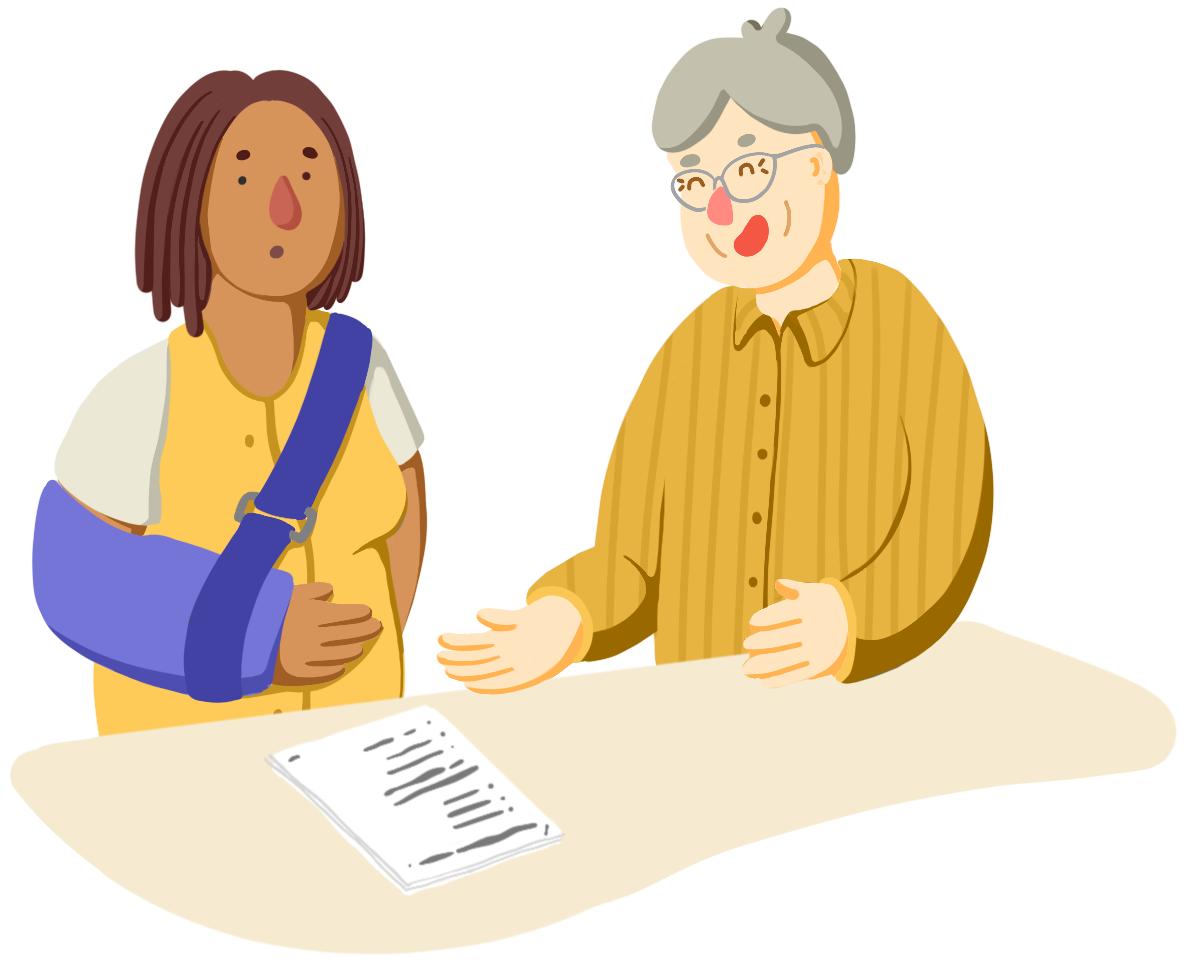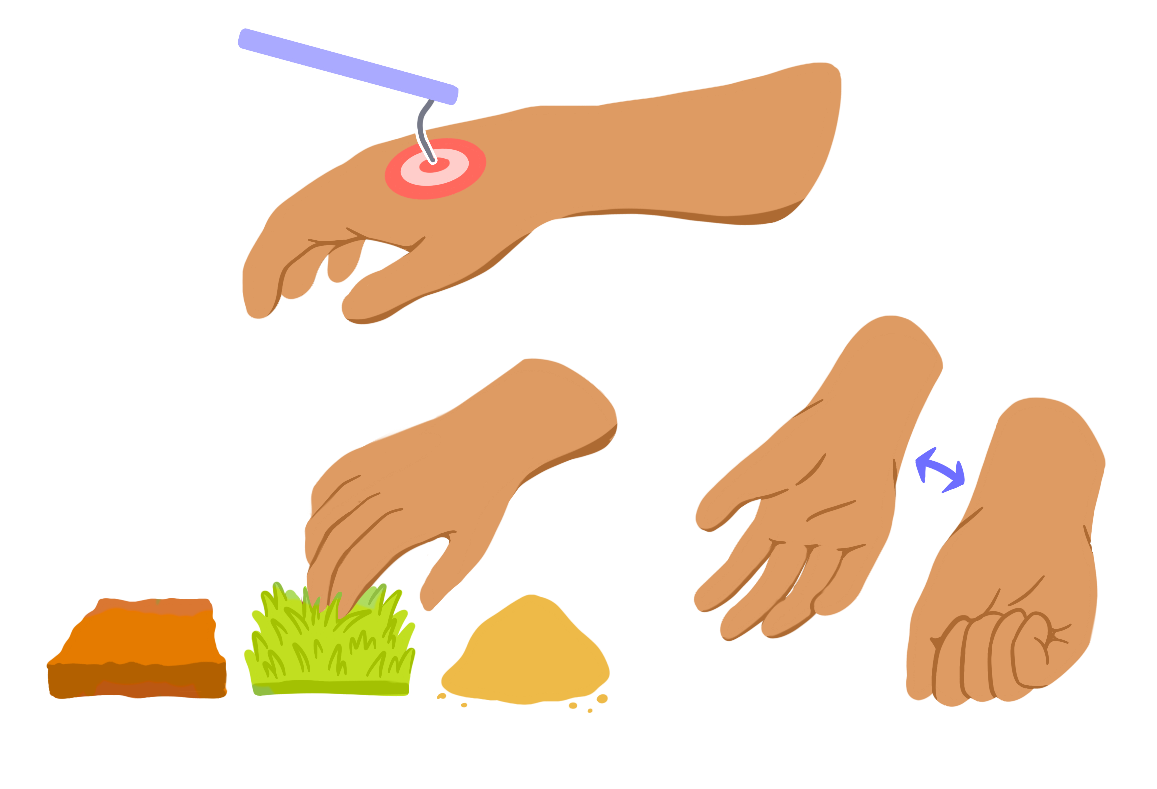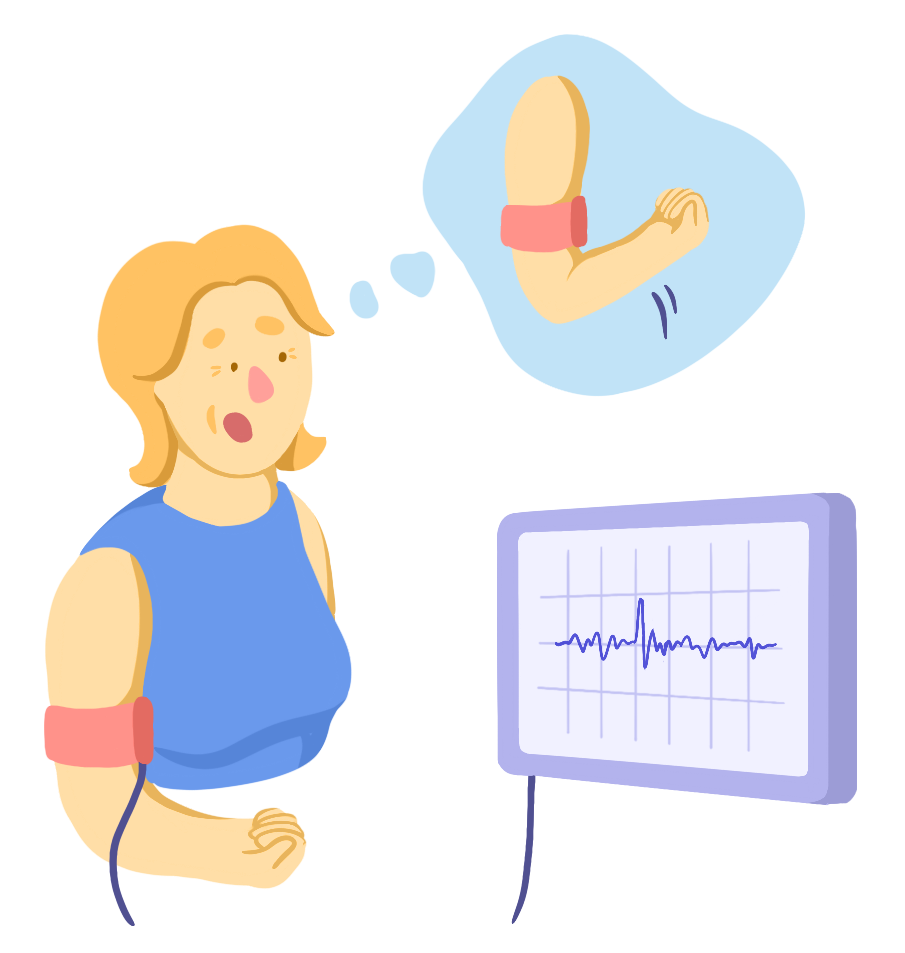Care After Injury
Care After Injury
After getting diagnosed, your care team will recommend a treatment plan tailored to you. This can be an overwhelming time, and it’s normal to feel uncertain or frustrated about what lies ahead. While your care team may not have all the answers, they are here to listen to your concerns and answer any questions you may have.
Recovery after a peripheral nerve injury is different for everyone.
The healing process takes time. How much recovery is possible and how long it will take will vary from person to person.
Talk to your care team about what recovery means to you.
Sharing your personal goals will help them guide you through the treatment options that best match your needs.
Treatment Options
Non-Surgical Treatment
Spontaneous Recovery
Sometimes, nerves can heal on their own after an injury. This is called spontaneous recovery (say: spon-tay-nee-us ri-kuh-vuh-ree). If the nerve is not completely cut or severely damaged, it's axons can slowly grow back around 1 millimeter a day.
However, not all nerve injuries can heal this way. Recovery will depend on several factors:
-
Severity of injury:
Severe injuries cause more damage to the layers of the nerve. This makes it harder for spontaneous recovery to occur.
-
Location of injury:
Nerves need to regrow from the injury all the way back to the muscle or skin. The further the site of injury is from the end target, the longer it will take for the nerve to regrow.
-
Presence of scar tissue:
Scar tissue can block the path of the growing nerve. This slows growth and makes it less likely that the nerve will reach its end target.
-
Aging:
As we get older, our body’s natural ability to heal and recover from injury is slowed. This may impact the speed of spontaneous recovery of the nerve.
When possible, spontaneous recovery is preferred over surgery and leads to better recovery.
However, if the nerve isn't healing on it's own, doctors recommend surgery within 3-6 months of injury for the best chance of recovery.
After your injury, your doctor might suggest to wait and see if spontaneous recovery is possible.
During this period of time, it may not feel like much is happening, but your care team will be monitoring your progress closely. Regular follow-up appointments will help them assess whether the nerve is healing on it's own or if surgery is a better option.
Do I have to get surgery?
If surgery isn't the right option for you, there are still ways to manage the nerve injury. Always talk to your care team to figure out what's best for your situation. Non-surgical treatment might look like using:
-
Supportive tools like slings or splints to keep the injured area stable and stop unwanted movement.
-
Physical therapy to gently exercise the area to keep joints and muscles active.
-
Mild electrical stimulation to help with any pain or discomfort.
Surgical Treatment
When should I get surgery?
If your nerve doesn't seem to be healing within 3-6 months of your injury, surgery may be recommended. The best timing will depend on your specific injury and your care team will help you decide what's best for you.
What happens during surgery?
During surgery, your surgeon will explore the injured area and work to fix the injured nerve so that it can start sending signals again. The exact surgery will depend on your injury.
Before your surgery, your surgeon will explain what to expect, how long it will take, and what recovery will look like after.
Types of Nerve Surgeries
Click the play button to see what happens during each surgery.
Primary Nerve Repair
In primary nerve repair, the injured part of the nerve is removed and the two ends of the nerves are carefully lined up and stitched back together.
Nerve Graft
Nerve grafts are done when the nerve ends are too far apart to join back together. A small piece of nerve from another part of the body is taken to help bridge the gap.
Nerve Transfer
During a nerve transfer, a nearby nerve is redirected to take over the job of the damaged one. The nearby nerve is attached to the part of the damaged nerve connected to the muscle.
The electrical signals from the working nerve are redirected into the muscle so that you can use it again.
Donated nerves are usually less important or control a muscle that already has other nerves to control it.
Nerve grafts and nerve transfers use a healthy nerve from a nearby area or another part of your body to help repair the injured one. That nerve usually shares its job with other nerves so the muscle it controls can still work even if this nerve is used for your surgery.
Rehabilitation
After Surgery
Immobilization and Rest
After your surgery, the injured area will likely be bandaged and held in place with a supportive tool like a splint, sling, or brace. This helps keep the area still and protects the nerve as it starts to heal. Be sure to follow up with your surgeon or care team as scheduled.
Exercise and Movement
To prevent muscle loss and stiff joints, your care team might give you some exercises to help improve your range of motion. These exercises can be adjusted over time to match your progress.
Doing these exercises regularly regularly can help you:
- Keep your joints flexible.
- Reduce swelling and pain.
- Rebuild strength over time.
Monitoring Your Progress

At follow-up appointments, your care team will check how well your muscles are working and whether you can feel sensations in affected areas. These signs help show if the nerve is healing.
You may be asked to answer some questions about how your injury is affecting your daily life. This gives your care team a better picture of your recovery and helps them adjust your treatment plan as needed.
Recovery can be slow, frustrating, and uncertain at times.
Full recovery may take months or even years. In some cases, it is not always possible. The most important thing you can do is to be patient with yourself and stick to your treatment plan as best you can.
If your goals or needs change along the way, talk with your care team about adjusting your plan to better suit you.
Restoring Movement and Sensation
After surgeries like nerve grafts or nerve transfers, your muscles may start receiving signals from a different nerve. Because of this change, your brain needs to learn how to use that connection again. This process is called sensorimotor re-education (say: sen-suh-ree mow-tr ree-eh-juh-kay-shn) .

It may include exercises like:
- Identifying where on the skin you are being touched.
- Feeling different textures to practice telling objects apart.
- Moving the affected muscle to build strength and control.
Biofeedback
A technique called surface EMG biofeedback (say: bai-ow-feed-bak) can help you rebuild muscle strength and control after a nerve injury.

-
Small devices called electrodes are placed on your skin over the weakened/injured muscles. These electrodes can detect the electrical signals your muscle makes when you try to move it.
-
Even if you can't feel the muscle working, this machine can show you electrical signals that tell you the muscle is still activating.
-
Seeing the feedback in real-time can help you practice reactivating the correct muscle until you can actually feel it working.
Over time, this feedback helps you:
- Learn how to activate the right muscle.
- Strengthen the new nerve-to-muscle connection.
- Retrain your brain to use the new connection.

